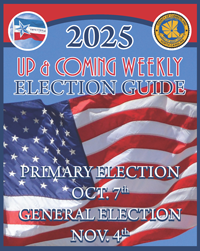 Most of us, both men and women, take a deep breath every time we go for a medical checkup. Will our tests be within normal ranges? Will we have strange lumps and bumps? Will we weigh too much or too little? Will our lives be turned upside down by some unexpected diagnosis this very day?
Most of us, both men and women, take a deep breath every time we go for a medical checkup. Will our tests be within normal ranges? Will we have strange lumps and bumps? Will we weigh too much or too little? Will our lives be turned upside down by some unexpected diagnosis this very day?
Women’s health and wellness are not more important than those of men, but they are different. For women and those who love us, there is good news and bad news.
The 2019 Status of Women in North Carolina: Health and Wellness report released last month finds that we are healthier in some areas than we were earlier in the decade. Mortality rates for heart disease, stroke, diabetes and cancers of the breast, uterine, cervix and ovaries have gone down — as have several sexually transmitted diseases, including HIV/AIDS. Our teen pregnancy rate has dropped almost 7% since 2013. These declining rates are positive news, of course, but our rates are still generally higher than the national average, including the births of low-weight babies.
Generally speaking, North Carolina women rank in the middle or bottom indicators of national health and wellness, and our diabetes rates remain among the highest in the nation. In addition, North Carolina women continue to report domestic violence and sexual assaults, with 35% experiencing some form of physical aggression by an intimate partner and nearly 20% having been raped.
Perhaps most worrisome of all is that the gains made over the last decade are not shared by all. Black women have higher rates of heart disease than do white and Hispanic women, as well as higher rates of HIV/AIDS. Ditto for breast cancer. Disparities among races and ethnicities clearly exist, and do disparities based on geography and socio-economic status. Women in rural areas clearly have less access to high-quality medical services, an issue that is becoming more acute as medical professionals flock to urban areas and rural hospitals close.
A drive along almost any rural road may be lovely and evoke nostalgia, but try counting health care facilities, which will be scarcer than proverbial hen’s teeth. A Robert Wood Johnson Foundation report puts Cumberland County’s patient to primary care physician ratio at 1,350:1; Robeson’s at 2,490:1; and Hoke County’s at an astounding 7,520:1.
The report details some policy recommendations, including Medicaid expansion. This topic has turned into a political football in the North Carolina General Assembly with Democrats demanding it and Republicans holding onto their long-standing and loud, “No!” Also being kicked around are proposals for paid family leave and paid medical leave, which would help women in low-wage jobs unlikely to provide such benefits. Also on the list are broader access to reproductive health care and decreasing violence against women.
This is challenging news for sunny summertime, but we all have women in our lives who are near and dear and without whom our lives would not be the same. The health and wellness status report sums up the importance of women’s health and wellness this way. “Good health, access to health services and the ability to live in a safe environment are critical to the economic security and overall wellbeing of North Carolina women.
“While poor health can negatively affect employment opportunities, educational attainment and financial security, good health allows women to meet their economic and educational goals and flourish in the other areas of their lives.”
It is clear that North Carolina is both on the right track and still has many miles to go.

 How to resolve AdBlock issue?
How to resolve AdBlock issue? 









